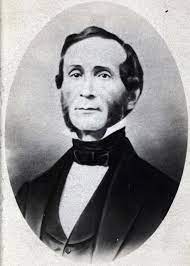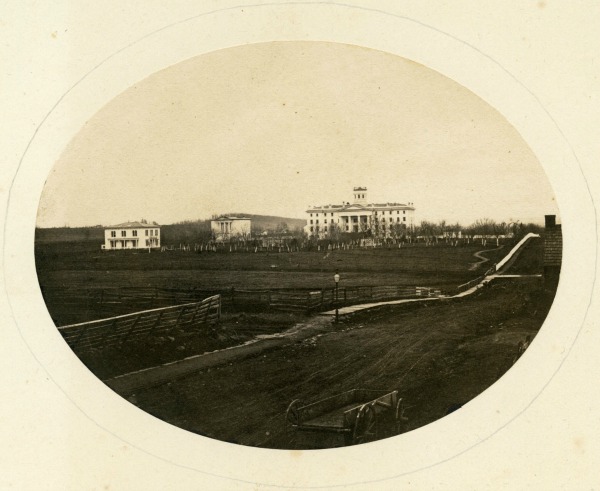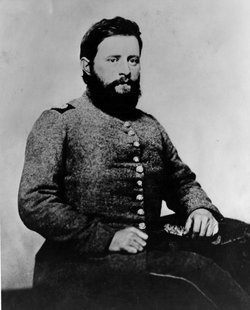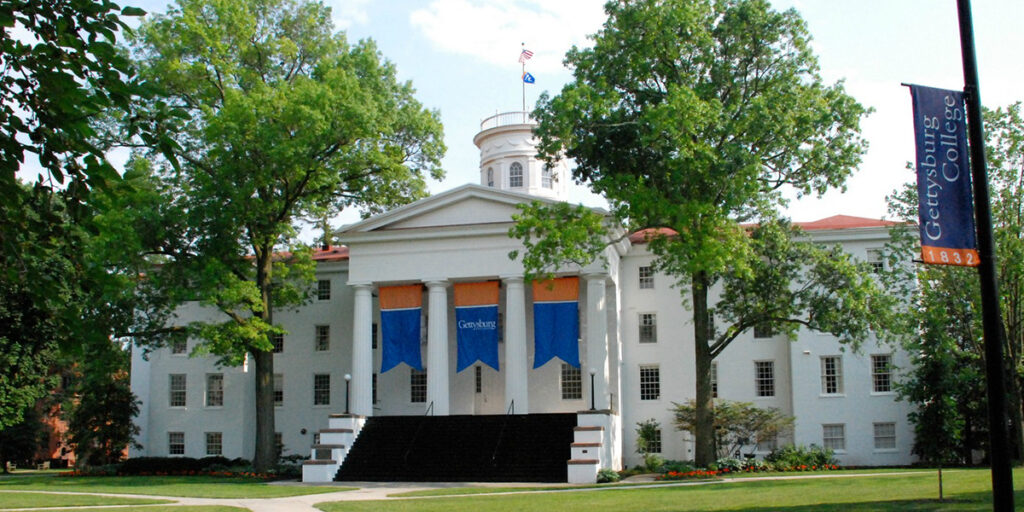Table of Contents
Museum members support scholarship like this.
“When I came to my room I saw it afforded ample accommodation for three – one on the bed and two on the floor… All rooms, halls and hallways were occupied with the poor deluded sons of the South.”[1] These are the words of a college Senior of Pennsylvania College at Gettysburg upon his return to campus on July 6th, 1863. Three days after one of the most consequential battles of the Civil War, the effects of the battle were still being felt by the citizens and students in the small town of Gettysburg. What began as a small cavalry skirmish to the West of campus, soon turned into a battle of epic proportions. The aftermath of the Battle of Gettysburg affected the town for months, and the legacy of the battle lasts to this day.

On the morning of July 1, Michael Jacobs, Professor of Chemistry and Mathematics at the college, escorted Union signal corps officers to the building’s cupola to survey the land surrounding the town. The battle began on the Seminary Ridge West of town with the campus in the Union rear, serving as a field hospital. By the end of the day, the Union line fell, forcing Federal troops to retreat through the town. Their point of retreat was Cemetery Hill, the location pointed out by Professor Jacobs, as a strategic point of interest to the southeast. Pennsylvania College was meant to be a field hospital for Union forces; by the end of the first day, it had fallen into the hands of the Confederates.

There were not many students remaining on campus by the time the battle began. Some students went off to join the war, some elected to stay home, and others took shelter in private homes during the battle. Those who stayed secured their belongings in College President Henry Baugher’s office which was kept under constant guard. Very few students remained on campus during the battle. One student who stayed, Michael Colver, class of 1863, earned the title of “Doctor” by the men he treated. A different student later recalled “while these men of the rebellion were with us they received the courtesies and attention due to them. Students and citizens combined to act the part of the good Samaritan.”[2]

By the end of July 1, Confederate forces had occupied the campus and much of the town to the south. Chief Surgeon Samuel B. Morrison, CSA, would designate the campus buildings for use as field hospitals. Among the buildings on campus used as a treatment center was the home of President Henry Baugher. “The President’s House served primarily as a confederate hospital, but there were also at least eighteen Union men from the Second Division, First Corps, treated there.”[3] Baugher’s wife, Clarissa, and daughter, Alice, served as nurses during the battle, treating soldiers of both armies present in their home. Baugher and his family chose not to leave town despite shells and bullets taking limbs from nearby trees. Having lost his son during the Battle of Shiloh a year earlier, he decided to stay and treat the wounded sons of the Union and Confederacy.

By the evening of July 3, the battle had been lost for the Confederates, beginning the long journey back South. Before the evacuation began, Dr. Morrison designated 259 men being treated at Penn Hall as too unstable for transport.[4] Several members of the 42nd Mississippi were among those left behind, including John Womack (wounded in the right arm) and John Rodgers (wounded in the right side) of Company H and J. B. Blackwell (wounded in the back of the leg) of Company E. With these men, stayed Dr. Lewis E. Gott of the 49th Virginia Infantry along with several other medical personnel to care for the wounded. The next day, the town and campus were reoccupied by Union forces. The Confederate surgeons staying behind were joined by Union surgeons as well as nurses from the US Sanitary Commission and Sisters of Charity. Those same Confederates who chose to stay behind were captured by Union forces and taken to Fort McHenry near Baltimore before being released back to the South on board the steam ship Swam.
Among the Confederate wounded within Pennsylvania Hall was Colonel Waller Tazewell Patton of the 7th Virginia, the great uncle of the famed WWII General, George S. Patton. Colonel Patton was mortally wounded by an artillery shell during Pickett’s Charge, blowing off his lower jaw. The wounded Colonel was taken to Pennsylvania Hall where attempts were made to treat his wounds. One of the nurses present, Euphemia Goldsborough, called Miss Effie by the soldiers she treated, took special care of the Colonel. Patton’s wounds made it difficult to breathe due to fluid build-up, forcing him to lean against a wall to assist in his respiratory function. Miss Effie realized that treatment was not enough. She used her own body to keep Patton upright until a better solution could arise. Despite the efforts of surgeons and nurses present, he died several weeks later on July 21.[5]

Colonel Patton is one of the hundreds of men treated within the walls of Pennsylvania Hall between July 1 and 29, 1863 after one of the most well-known battles of the Civil War. The effects of the battle in and around the small town of Gettysburg can still be seen today, and it is no different at Gettysburg College, “For years blood-stained floors and books used as headrests were vivid reminders of battle… As late as 1937, while excavating for the North Portico of the building, workmen dug up bits of bone.”[6] Several of those bloody books can be viewed online through Gettysburg College Special Collections, Musselman Library. As one of the many students to walk through the doors of Penn Hall, the aftereffects of the battle can still be felt. Ask any student of Gettysburg College past or present, chances are, they will have a ghost story to tell. Whether it be objects moving about or a lone soldier circling the cupola at night, the men treated inside of Pennsylvania Hall are still present.
Want to learn more? Follow us on Facebook and Twitter to discover more stories from Civil War medicine!
Become a museum member and support our educational programs and research like this.
About the Author
Michael Mahr is a Senior at Gettysburg College from Dover, Massachusetts with a major in History and a minor in Public History, he is also considering adding a second minor in Peace and Justice studies. Michael is the Brian C. Pohanka intern at the National Museum of Civil War Medicine through the College’s Civil War Institute.
Endnotes
[1] Glattfelter, Charles H., Yonder Beautiful and Stately College: a history of Pennsylvania Hall, 1970, GettDigital: Virtual Reading Room, Special Collections / Musselman Library, Gettysburg College, Gettysburg, Pennsylvania. Pg 46.
[2] Glattfelter, Charles H., Yonder Beautiful and Stately College: a history of Pennsylvania Hall, 1970, GettDigital: Virtual Reading Room, Special Collections / Musselman Library, Gettysburg College, Gettysburg, Pennsylvania. Pg 47.
[3] Gindlesperger, James. Bullets and Bandages: the Aid Stations and Field Hospitals at Gettysburg. Durham, NC: Blair, an imprint of Carolina Wren Press, 2021. Pg 96
[4] Schneider, Craig. The College Hospital: Pennsylvania College and the Battle of Gettysburg. 2007, Special Collections / Musselman Library, Gettysburg College, Gettysburg, Pennsylvania.
[5] Gindlesperger, James. Bullets and Bandages: the Aid Stations and Field Hospitals at Gettysburg. Durham, NC: Blair, an imprint of Carolina Wren Press, 2021.
[6] Glattfelter, Charles H., Yonder Beautiful and Stately College: a history of Pennsylvania Hall, 1970, GettDigital: Virtual Reading Room, Special Collections / Musselman Library, Gettysburg College, Gettysburg, Pennsylvania. Pg 48.


